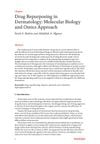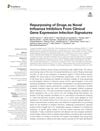Drug Repositioning Using In Silico Compound Profiling
December 2009
in “
Future Medicinal Chemistry
”

TLDR Using computers to analyze drugs can find new uses for them, but actual experiments are needed to confirm these uses.
In 2009, researchers investigated the strategy of drug repositioning using in silico compound profiling to find new therapeutic uses for existing drugs. They analyzed drugs such as methadone, rapamycin, saquinavir, and telmisartan, discovering potential new targets and indications. Methadone was found to have activity on various receptors and transporters, with 21 new targets identified, including muscarinic acetylcholine activity. Rapamycin was associated with 23 targets across different families, with 18 new targets identified through pharmacophoric search. Saquinavir could potentially target NK₂ receptors, and telmisartan showed possible activity against several nuclear and PAF receptors. The study concluded that in silico profiling is a valuable tool for identifying new uses for drugs, but experimental validation is necessary to confirm these findings. Computational methods were highlighted as increasingly important in drug discovery and development.




